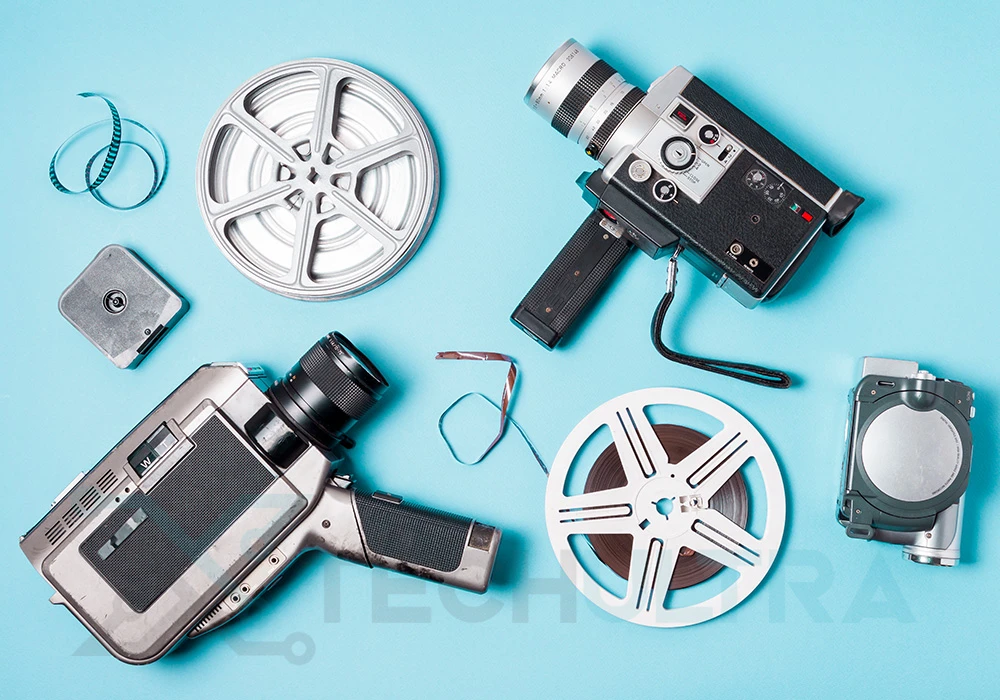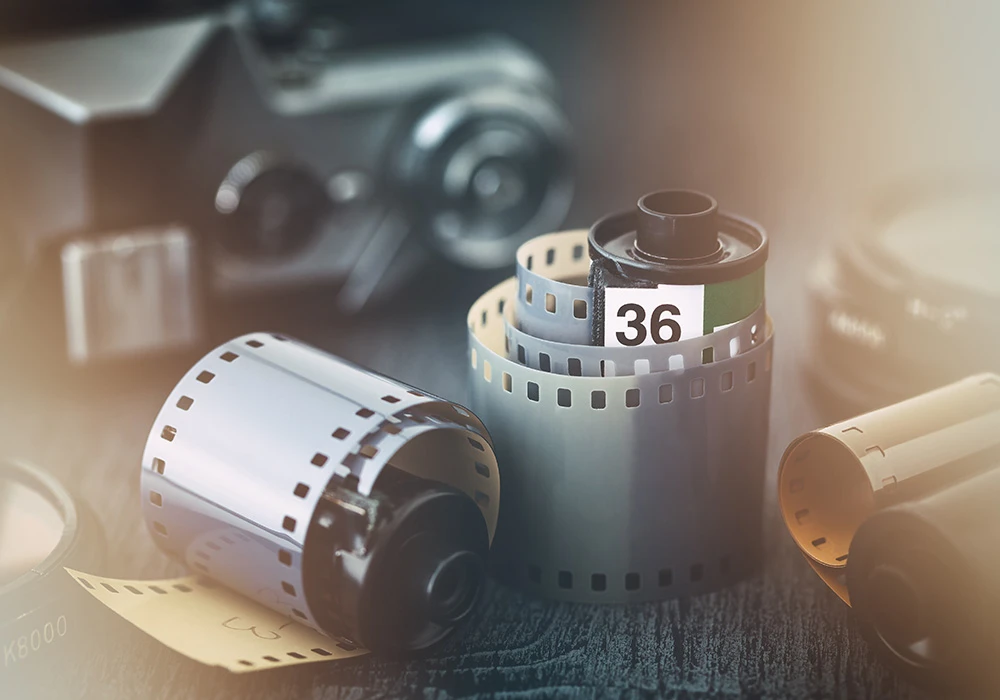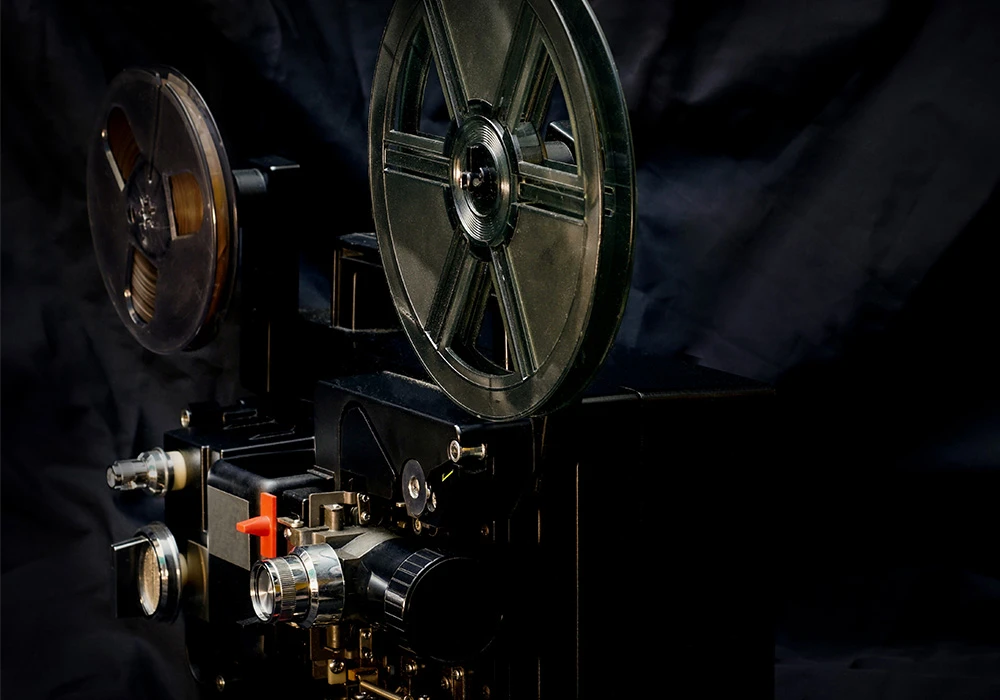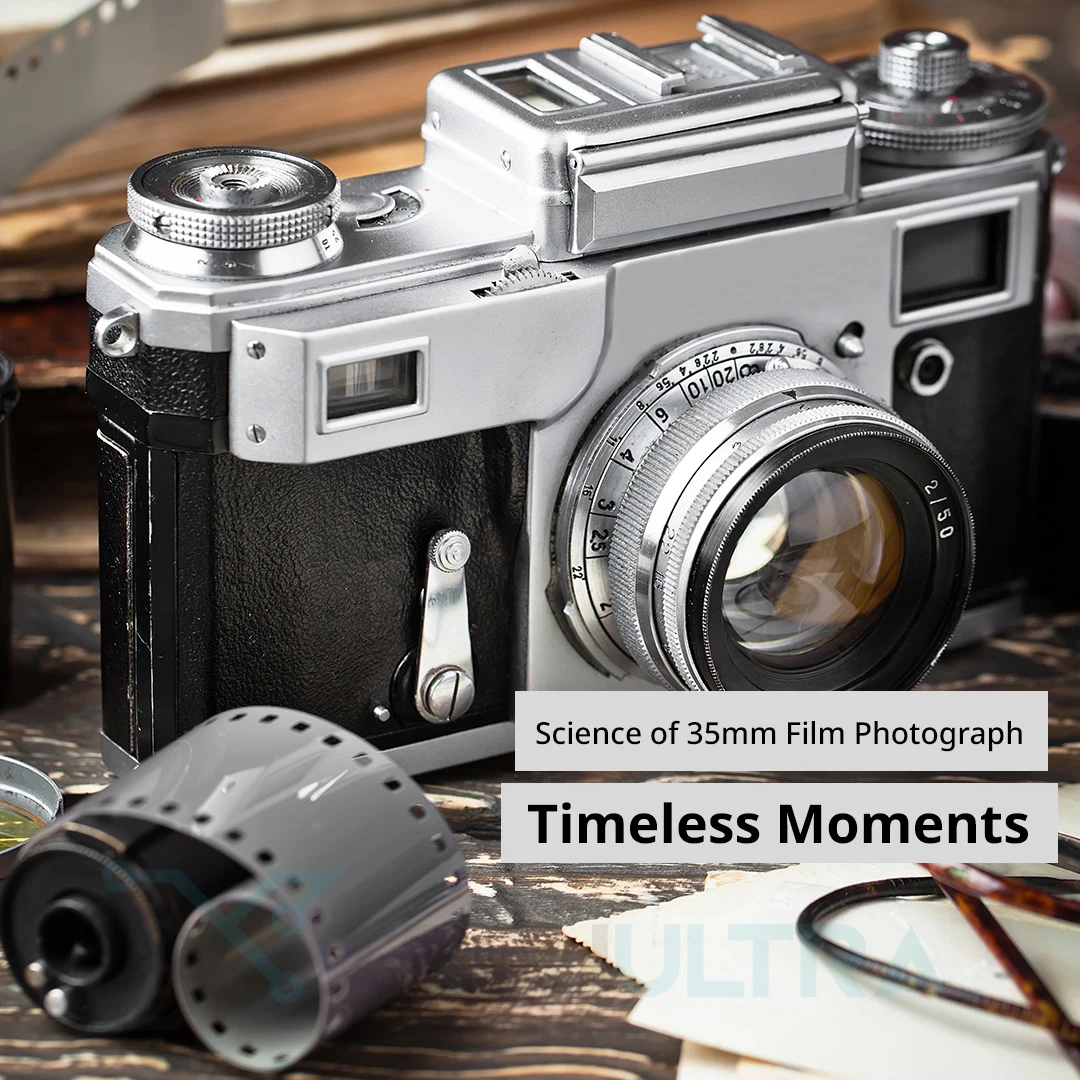Step into a realm where each press of the camera’s button isn’t just a still moment but a journey into the artful blend of light and chemistry. In a time dominated by instant digital results, the charm of film photography endures—a tribute to craftsmanship, patience, and the tangible allure of analog creation.
Photographic films, also known as camera films, are light-sensitive materials crucial in capturing and producing images. These films, comprising a flexible base coated with a light-sensitive emulsion, undergo chemical changes when exposed to light through a camera’s lens. The development process unveils latent images, resulting in the creation of final photographs. If you are looking for best rangefinder cameras, then explore our recent articles.

Best 35mm film:
In the orchestra of visual storytelling, there’s a timeless maestro, a slim strip of film that crafts stories in silver tones and texture. 35mm film, commonly known as 135 film, was introduced by Kodak in 1934. It is a type of film used for both motion pictures and still photography.
Enter the captivating realm of 35mm film photography, where each frame is a canvas, every snap a tune, and every picture a part of the human expression story.
Key features:
The 35mm film swiftly gained popularity due to its flexibility and ease of use, setting a standard in the industry. Let’s explore some key features of 35mm film:
1. Size and Format:
The width of film is 35 millimeters, rolled up and stored in a light-tight canister that protects it from light exposure.
2. Frames and Exposure:
A standard roll contains individual frames, with each still photography frame typically measuring 36mm by 24mm. A roll might have around 24 or 36 exposures.
3. Film Types:
To cater the different photographic needs, film is available in color negative, black and white, and color reversal (slide) types.
4. ISO Sensitivity:
The light sensitivity of film can be indicated by various ISO ratings (film speed). Common ratings include 100, 200, 400, and 800, with higher ISOs being more light-sensitive but potentially showing more grain.
5. Versatility:
It is widely used due to its adaptability to various cameras, from point-and-shoot to single-lens reflex (SLR) and rangefinder cameras.
6. Development Process:
After capturing images, chemical development reveals latent images. The developed film can then be printed or scanned for digital use.
7. Digital Transition:
35mm film is greatly appreciated by users because of its unique aesthetics and process, even when digital photography has gained prominence.
8. Archival Quality:
Properly stored 35mm negatives exhibit excellent archival stability, preserving images for an extended period, although environmental factors can influence longevity.
Different Kinds of 35mm Films
Numerous types of 35mm films are accessible, each with distinct qualities and uses. Here are some common types:

1. Color Negative Film:
This is the most used film for color photos, creating negatives with reversed colors. During development these negatives produce prints. Popular brands include Kodak Portra and Fujifilm Pro.
2. Black and White Film:
Known for their classic appearance, Monochromatic films generate grayscale images. Well-known brands include Ilford and Kodak Tri-X.
3. Cine Film (Motion Picture Film):
Cine film can be adapted for still photos. It is initially crafted for movies, presents a unique cinematic look and comes in various sensitivities. Cinestill is a popular brand repackaging motion picture film for still photography use.
4. Color Reversal Film (Slide Film):
Slide film produces positive images, unlike the color negative film. The ultimate result of this process yields a final transparency or slide that offers versatile uses. Whether for direct viewing to appreciate its authentic visual appeal or for creating stunning prints, these slides encapsulate the essence of the captured moments, preserving them with exceptional clarity and fidelity. Examples include Fujifilm Velvia and Kodak Ektachrome.
5. Infrared Film:
Infrared film can capture extraordinary images beyond what our eyes can see as it is super sensitive to infrared light. It’s commonly used for creative and experimental photos.
6. Cross-Processed Film:
Cross-processing means developing a film in chemicals meant for a different kind of film. Unlock an array of cool color changes and captivating contrasting effects achieved through the versatile techniques of 35mm film photography. Photographers often use slide film and develop it as color negative or the other way around.
7. High-speed films:
High-speed films are suitable for low-light situations or fast-moving scenes. With ISO ratings of 800 and higher, they’re more responsive to light but might show more noticeable grain. Examples include Kodak Tri-X 400 and Ilford Delta 3200.
8. Specialty Films:
To cater the different choices and preferences of artists different specialty films are available in market. This includes films with unique effects like Lomography films, films with different color tones, and films producing dreamlike colors with distinct features like Kodak Aerochrome,.
Film enthusiasts often enjoy trying out different films to achieve specific looks and effects in their pictures.

Conclusion:
As we wrap up our journey through the captivating world of 35mm film, it’s not just a conclusion; it resonates in the halls of timeless pictures. The charm of this analog medium goes beyond pixels, encouraging you to embrace the tactile elegance of loading film and the magical process of development. In the soft hum of the darkroom, where shadows and light dance together, the enchantment lingers. Whether you’re an experienced photographer or an aspiring artist, the discoveries within the intricate details of this classic craft urge you to explore your art. So, standing at the doorway of photographic history, let the fascination of 35mm film inspire your own story—a collection of moments captured in silver, looking ahead for your creativity.











